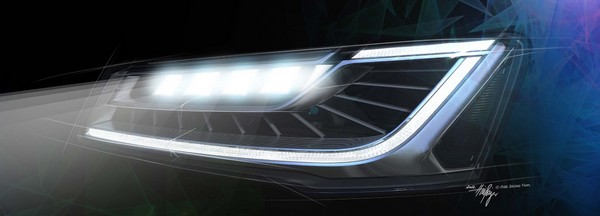Europe and Asia have been driving advanced automotive LED lighting developments, while the technology has been slow to pick up in the U.S., due to more stringent legal requirements, reported New York Times.
One notable automotive lighting requirement in the U.S. is how headlights must have a specific lighting pattern. The pattern can rotate when a car turns a corner, but has to maintain the same lighting shape.
As a result most advanced automotive lighting technology have been coming from Europe or Japan, said Stephan Berlitz, Audi’s head of lighting technology.
In addition amendments to automotive lighting can be a long and arduous process that could take years in the U.S. because of testing, public comments and rule making.
 |
|
Audi A8 LED matrix headlights. (Photo courtesy of Audi) |
Still LEDs are very appealing light sources in car designs by allowing greater flexibility in car headlight styling to give it a distinctive signature look.
LED lamps can also be combined with cameras so it can continuously alter the light patterns to meet immediate road conditions.
Moreover, LEDs smaller size allows for more bulbs in each headlight, which can be programmed to turn on or off to create unique light patterns based on road conditions and oncoming traffic.
Opel’s AAFL Plus LED lighting system to be introduced this summer will be able to create 256 beam patterns, said Ingolf Schneider, Opel’s director of lighting technology, and Audi has already launched adaptive matrix lighting system.
However, the U.S. has not approved the more advanced LED lighting system. The Society of Automotive Engineers has been working for over a year to create standards that the National Highway Traffic Safety Administration could use as a basis for rule-making changes. Audi even brought a European version of its A8 sedan for demonstration in front of government officials.
The report also pointed to OLED light sources, but noted the technology was still too expensive at the moment.
For further details on advanced automotive lighting technologies please click here.












